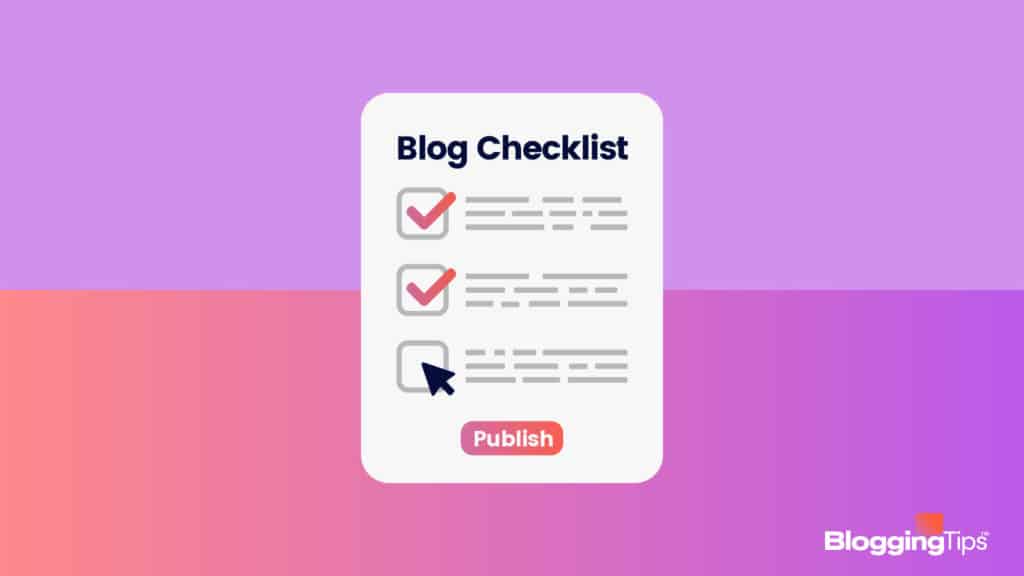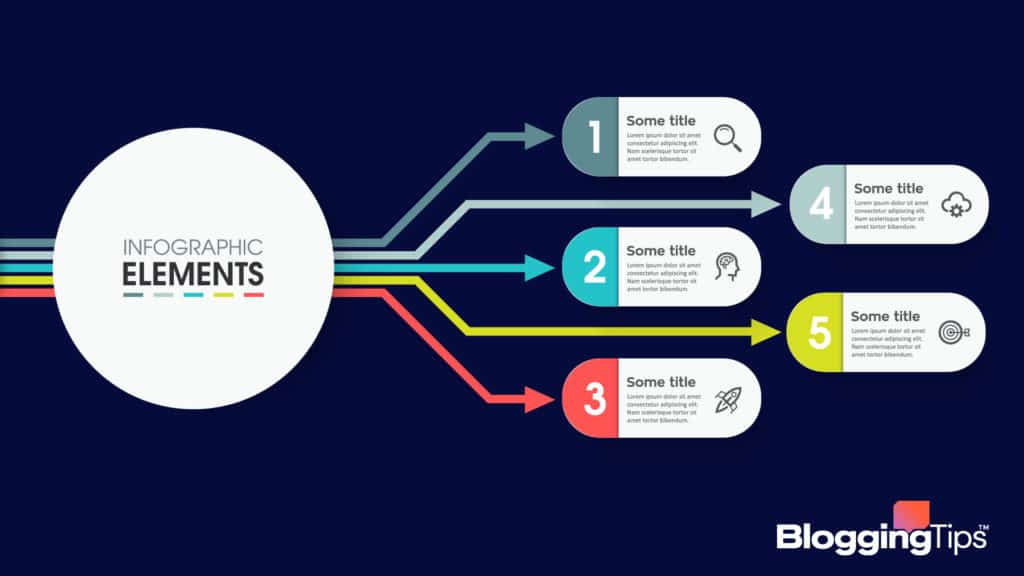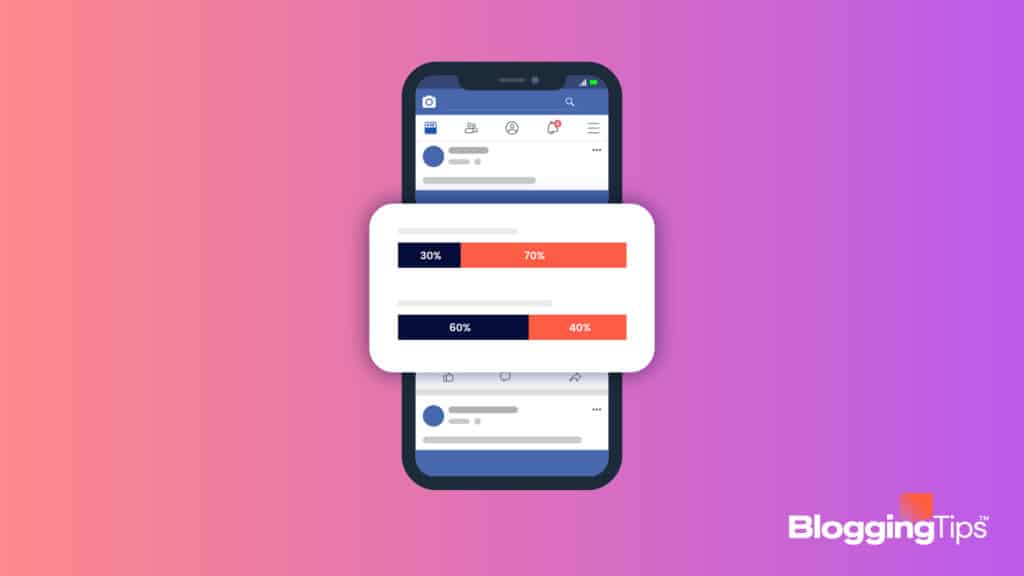We’ve all struggled with coming up with blog post ideas and found ourselves stuck in writer’s block.
Not to mention, we may have some blog content planned, but it may not get the interaction we hope for.
Then, we’re left racking our brains for a good idea and trying to figure out where we went wrong.
But you know what helps?
The average blogger would benefit from having an extensive resource file full of content ideas and frameworks.
After all, you can just go through it and get the inspiration you need.
This is where we come in.
We’ve previously discussed how to write a blog post, and now we’ll list 34 types of blog content that you can use on your own.
This way, you don’t have to worry about running out of ideas again!
- 34 Types of Blog Content: At a Glance
- 1. How-to Post
- 2. Listicles
- 3. Frequently Asked Questions (FAQs)
- 4. Case Study
- 5. Interview
- 6. Beginner’s Guide
- 7. Review
- 8. Product Comparisons
- 9. Industry News
- 10. Infographic Post
- 11. Problems and Solutions
- 12. Guest Post
- 13. Quiz
- 14. Inspiring Post
- 15. Profile
- 16. Controversial Topic
- 17. Ebook
- 18. Cheat Sheet
- 19. Debate
- 20. Survey or Poll
- 21. Twitter Post
- 22. Contest
- 23. Presentation
- 24. MP3
- 25. Video Blog
- 26. Screencast
- 27. Webinar
- 28. Behind-The-Scenes Content
- 29. Memes
- 30. Quotes
- 31. Live Video
- 32. Online Course
- 33. Glossary
- 34. Charity/Awareness Posts
- Hit Publish!
34 Types of Blog Content: At a Glance
- How-to Post
- Listicles
- Frequently Asked Questions (FAQs)
- Case Study
- Interview
- Beginner’s Guide
- Review
- Product Comparisons
- Industry News
- Infographic Post
- Problems and Solutions
- Guest Post
- Quiz
- Inspiring Post
- Profile
- Controversial Topic
- EBook
- Cheat Sheet
- Debate
- Survey or Poll
- Twitter Post
- Contest
- Presentation
- MP3
- Video Blog
- Screencast
- Webinar
- Behind-The-Scenes Content
- Memes
- Quotes
- Live Video
- Online Course
- Glossary
- Charity/Awareness Posts
Now let’s dive into what each is in detail.
1. How-to Post
Also known as tutorials, these how-to posts tend to be super popular.
After all, their target audience is beginners in your niche that look for valuable content.
As long-form content, a tutorial is likely to do well in terms of Search Engine Optimization (SEO) because that’s the type of content people Google.
Even better, it’s probably easy for you to put together because you’re breaking down an all-too-familiar process.
When creating how-to guides, you want to add videos and images to help readers be on the same page as you.
You should also ensure your information is specific, so break down the process into small steps.
And don’t assume your reader knows niche-specific terms.
So, what should you create a step-by-step guide about?
If you’re a beauty guru, do a makeup tutorial.
If you’re a designer, write a design tutorial. If you’re a fitness coach, create a workout routine.
So, it depends on your niche and target audience.
Examples of How-To Posts:
2. Listicles
List articles are some of the most popular types of blog posts, giving readers the needed guidance and getting tons of shares on social media platforms.
They’re also easy to skim with consumable information since each point is typically unrelated to the next.
In other words, readers don’t need to focus too much to follow.
List posts are an excellent idea for your content marketing strategy.
However, you’ll need time and effort to create a memorable list post.
And you can create lists of almost anything, such as this list of content types, smart cabinets, evergreen shrubs, and more!
Now, let’s go over some of the sub-types of list posts:
Resource Lists
When you compile a list of resources, you offer your audience real value, demonstrate your expertise, attract social media shares, and get backlinks.
You can even add an affiliate link to each resource for some revenue!
The key to resource lists is research.
Find valuable resources, and share their links.
Also, mention why you’ve picked each and how the reader would benefit from them.
These can be lists of books, websites, tools, videos, social media influencers, or else.
Checklist

Who doesn’t love lists?
Checklists are super practical and easy to digest.
They include items to remember or actions to take.
Also, they can be downloadable in PDF format and have an empty box next to them for your audience to check.
And they’re easy to create and not at all time-consuming.
Depending on your niche, you can publish a checklist for cupboard essentials, open houses, gardening, spring cleaning, travel essentials, and more.
Examples of Checklist Posts:
3. Frequently Asked Questions (FAQs)
Readers already search these common questions, so why not answer them in a long post or, better yet, a series of regular blog entries?
As you’d imagine, this is helpful for SEO purposes.
If you get tons of questions, this content type can benefit beginners.
And it’s evergreen, as it can remain relevant and helpful for a long time.
Examples of FAQ Posts:
4. Case Study
Case studies are compelling because they showcase real examples.
They’re also a good tool if you’re looking to generate social proof.
Do you have a service or product you’d like to promote?
Choose customers that have a positive experience with it, email them, and ask them how they’ve used it, how it helped them, and so on.
Then, create a case study using that intel, and be generous with the details!
Examples of Case Study Posts:
5. Interview
A blog post idea is to interview other bloggers, readers, or people in your niche; it can be in a video, audio, or written format.
And you can get your readers engaged by interviewing people they look up to.
If you’re a new blogger, conducting interviews is an excellent idea because your readers can get the experience from the interviewee rather than you.
Also, you get to leave the bulk of writing to them.
You can even turn it into a series, with standard questions you ask each person, saving you time and energy.
Make sure you ask questions that interest your readers.
Get the person’s business insights, professional advice, and more.
And if you’re interviewing a famous person, try to come up with interesting questions they haven’t been asked before.
Examples of Interview Posts:
6. Beginner’s Guide
Beginner’s guides focus on a critical point in a field and cover it thoroughly.
These long-form posts are very popular and great for SEO purposes.
Not to mention, they allow you to show your expertise.
Although they may require occasional edits, they’ll be helpful and relevant for several years.
You can also monetize them by adding affiliate links to relevant products.
For instance, you can write a guide to video editing, kite flying, or thought leadership.
Example of Beginner’s Guide Posts:
7. Review
If you want to increase search engine traffic and build brand awareness, review products, services, or apps on your blog.
You’ll find a relevant item to review regardless of your niche.
And you can turn these blog posts into an excellent source of affiliate revenue and earn a commission for each purchase.
Examples of Review Posts:
8. Product Comparisons

Product comparison posts are similar to reviews in content but different in structure.
After all, you compare two products, services, or so to help your blog readers make a purchasing choice.
So, naturally, you won’t be as detailed as in a single product review.
When curating a comparison post, settle on certain features and discuss them for each product.
Mention the pros and cons of each. You can even announce a winner at the end.
Also, we recommend adding infographics and video footage of you testing the products to make your blog post more engaging.
Examples of Product Comparisons Posts:
9. Industry News
This blog post type works for a specific blogging style where you break local news, company news, latest trends, current events, or big news in the industry or field.
Make this kind of post a regular feature, and you can build an audience that comes back for your blog content.
News content is a good fit for bigger blogs. With a staff of writers, they can accommodate the industry’s needs and keep up with the latest news, publishing it on time.
For such blog post types, you can state the news briefly or compile several pieces of info and link to your sources.
Also, don’t be afraid to jump in with your commentary or opinion about it.
Examples of Industry News Posts:
10. Infographic Post

Let’s talk about those attention-grabbing images.
Although infographic posts aren’t as popular as they used to be, they’re still handy.
They also generate shares and backlinks.
You can use various tools to create an infographic.
Although it helps to get professional infographics done by a designer, you can make helpful charts via PowerPoint.
Additionally, Canva and Venngage can help.
And if you’re struggling to find ideas, try charts, lists, or myths vs. facts.
Examples of Infographic Posts:
11. Problems and Solutions
There’s nothing like problems in generating interest; the excitement draws people in!
Give your readers a solution to their problem, or, better yet, alert them to a mistake they’re making and tell them what to do instead.
Give your audience a list of things not to do, and tell them what to do.
For instance, talk about vetting guests from other blogs, gaining lean body mass, or lead generation and ways to fix them.
Examples of Problems and Solutions Posts:
12. Guest Post
Guest posts are a great way to get free content from any niche.
Why not invite a fellow guest writer to create a post for you?
These can be other bloggers or people of interest in your niche, and they can write about anything in the field.
This way, your audience can get a new perspective, and you can take a break from writing.
Curating guest blogger guidelines is a good idea if you intend to make guest posts regularly.
Examples of Guest Posts:
13. Quiz
If you’re looking for fun post ideas, why not entertain your audience with a quiz?
This allows your audience to engage with your content.
Meanwhile, you can collect valuable insights and data.
If you post a quiz, don’t forget the social share at the bottom and the call to action so that many people can join in on the fun.
Also, WordPress has accessible quiz plugins to use!
Example of Quiz Posts:
14. Inspiring Post
One of the most rewarding parts of the job is inspiring others to make a change.
When people read success stories, they feel much more reachable.
It gives them the push they need.
The trick is to find an inspiring success story that sparks interest.
It can be about a milestone for your blog, the reason you’ve started your blog or craft, a turning point in your life, another motivating personal experience, an underdog success story, or something else.
Examples of Inspiring Posts:
15. Profile

The blog content of a profile is essentially a story of a specific person, typically a celebrity.
But it can also be about a customer or an up-and-coming person.
In a profile post, you want to give your blog readers a biography of the person and add links for further info.
Talk about why they became famous, how they stand out from the crowd, why you’ve picked them, and what they’ve accomplished.
Try to pick interesting details that aren’t well known about their life.
An example would be sharing the story of one of your customers who turned their life around with your fitness program.
This is a great way to promote your digital product!
Example of Profile Posts:
16. Controversial Topic
Controversial articles tend to garner much attention, clicks, and social media shares because people love the drama.
These blog posts are easy to write.
So, do you have the guts to voice your unpopular opinions?
Just pick a controversial topic that interests you, and do some keyword research to use the related keywords.
Also, don’t be afraid to throw in some sarcasm if you want! But be very selective with your word choice because things can get heated.
These blog types are the way to go if you have a bold statement to make or a hot take on a topic like gun control or euthanasia.
Example of Controversial Topic Posts:
17. Ebook

Are you looking for downloadable content?
An eBook in PDF format can help you have more email subscribers and be fun to make!
If you find it too intimidating, remember that the eBook doesn’t have to include all-new content.
Instead, you can pull from your blog posts, email newsletters, notes, and helpful resources.
Then, add in some bonus material, and voila! Now, you can announce your eBook’s launch in one of your blog posts.
Examples of Ebook Posts:
18. Cheat Sheet
A cheat sheet is a quick and practical reference on a particular subject matter that readers can turn to for guidance.
The target audience for such blog posts can be beginners or professionals.
When it comes to cheat sheets, the trick is to be straight to the point.
You don’t want to go into details; compile all the critical information into an organized PDF file.
A great example of cheat sheets is a conversion one for common measurements to use while cooking.
Example of Cheat Sheet Posts:
19. Debate
Another blog idea is to start a debate.
Why not engage your readers in a stimulating discussion?
Of course, this requires that you have an active audience, so we wouldn’t recommend it for new bloggers.
Demonstrate your opinion about a particular topic.
Then, cover its different sides, and let your audience join in on the conversation.
Are you pro or against it, and why?
Once you feel the discussion is finished, you can disable the comments and write a follow-up blog post detailing the most critical points in the debate.
Example of Debate Posts:
20. Survey or Poll

Other engaging types of blog posts are surveys and polls, as they allow your audience to interact directly with your blog content.
If you run a successful blog with an active audience, surveys can help you gather some insights into your audience.
This way, you can choose what blog topics to tackle and what products to design or promote.
Even better, you can share the survey results with your readers, which can get you a lot of social shares.
In a poll, you pose a question and offer several possible answers for readers to choose between.
In a survey, you create a questionnaire with multiple-choice questions, essay questions, and fill-in-the-blank questions.
Lastly, you’ll find various survey and poll tools (like Typeform.com) and WordPress plugins.
Example of Survey or Poll Posts:
21. Twitter Post
Do you want informative and fun written content? Twitter posts are essentially “what people are saying” posts.
They’re super easy to put together.
You can compile 20+ tweets about a particular topic, preferably a trending one, into an entire blog post.
Use embedded content rather than screenshots of the tweets or threads, and don’t hesitate to offer your commentary about them.
They can be about a Twitter campaign or any relatable topic.
Example of Twitter Posts:
22. Contest
Do you want to publish content that engages your audience or even helps you build an audience? Shake things up with a contest or competition.
This is a relatively easy idea for most blogs, but it requires some investment or a sponsor because the prize has to be worth the competition.
The contest can even serve a need of your brand or blog!
For example, if you have a photography blog, you can host a contest where readers submit their photos, and you pick the best ten photos and a winner.
Examples of Contest Posts:
23. Presentation
Publishing a new blog post with a PowerPoint presentation or slideshow is a solid idea.
After all, it can provide your readers with high-quality content in an attractive visual format.
It’s easy to make, and you can reuse one you’ve previously prepared.
To create presentations and slideshows, use PowerPoint for Windows or Productivity Office for Mac.
Otherwise, you’ve got plenty of online tools, including Canva and Adobe Express.
Afterward, you can upload them to SlideShare, an excellent platform for presentations and one you can go to for inspiration.
Then, embed the slideshows into your blog posts.
Finally, explain their topics, dates, and locations (if you’ve presented them in front of an audience).
Examples of Presentation Posts:
24. MP3
Why not try an audio podcast if you’re uncomfortable putting out videos?
Podcasts are super popular with a growing audience, and there are various statistics proving that.
They can be anything from simple MP3s to full-blown series with written transcriptions.
If your podcast grows, you want it to be easily accessible, and the regular blog post won’t do.
We recommend you register your own podcast on iTunes, Stitcher, or else, as cross posting can get you more subscribers.
As for the content of the audio recording, it can be anything from jokes to literary discussions.
Example of MP3 Audio Posts:
25. Video Blog

Commonly known as a vlog, you can post this content as a video podcast (like in the form of Youtube videos) or embed it in your blog posts, which creates a more personal connection with your audience.
Not to mention, the algorithms of several platforms tend to push up video content.
With little effort, you can discuss different topics, and you’re done.
In other words, there’s no content writing, editing, formatting, or else.
But you need to be comfortable in front of the camera or open to it.
If you opt for the latter, you can add a brief introduction and some additional notes to the blog entry.
Another idea is to use these vlogs in the middle of regular posts as an example, tutorial, or else.
And make sure the topic is engaging.
Example of Video Blog Posts:
26. Screencast
Screencasts are screen recordings that usually walk you through a process, and they may be accompanied by a voice-over.
They’re easy to consume, thanks to the visuals.
And it’s quick to film with about 30 minutes of editing.
You can use TechSmith to make screencasts and post them to your blog and even YouTube.
With screencasts, you can post a feature review, product use tutorial, setting up Windows tutorial, or else.
Examples of Screencast Posts:
27. Webinar

A webinar isn’t a live video but a pre-recorded one.
You can use webinars in your content marketing strategy.
By joining your email list, readers can get access to your free webinar.
And you can add extra content (like slideshows) for them to download.
Related Tools for Making Great Webinars:
28. Behind-The-Scenes Content
Give your readers a peak behind the curtains with a behind-the-scenes post into your real life and business.
In other words, invite people to shadow you throughout your day.
Not only is this informative, but it also creates a personal connection with your readers.
There’s no need to reveal corporate secrets.
Instead, you can share your morning routine, income report, top tips, photos of your office setup, video footage of how you work, or else.
Examples of Behind-The-Scenes Content Posts:
29. Memes
We can’t talk about viral content ideas without mentioning Memes and Gifs.
They help you add a fun twist to your content, making it more engaging and shareable.
For one, you need to ask yourself if memes fit your style.
You can look for the inside jokes of your industry and create those memes via a meme generator.
Otherwise, you can use your favorite memes and GIFs that relate to your niche and incorporate them into a post.
When it comes to GIFs, note that they can increase your page load time because they’re short videos, so keep them to a minimum.
Examples of Memes:
30. Quotes
Other post ideas we have for you are quotes.
They’re another way of sharing what other people are saying.
The quotes can be insightful, inspirational, funny, or silly ones that relate to your niche.
They can be in text form with photos of who they’re by or in a graphic format.
Examples of Quote Posts:
31. Live Video
It doesn’t get more engaging than a livestream, as you interact with your audience in real time.
Live videos aren’t as structured as webinars, so you can sit back and hang out with your audience.
To host a livestream, you can use YouTube, Facebook, Twitch, Instagram, or any platform with a streaming feature.
Examples of Live Video Posts:
32. Online Course

An online course is the type of long-form content that can help teach you a subject or skill.
You can offer your course for free via a blogging tool, email, or downloadable PDF.
There are numerous formats that you can choose from, including written content, voice-overs, video recordings, and combinations of these.
In addition, you can publish blog posts for each point you want to tackle.
Then, post a gathering post with links to the previous posts and some final tips and tricks.
Examples of Online Course Posts:
33. Glossary
If your priority is SEO, posting a glossary is an excellent idea.
Just think of the different keywords you can insert into your post!
Not to mention, these posts are informative and helpful to readers of all levels.
After all, beginners may be unfamiliar with field-specific terms, and more advanced readers could use the occasional reminder.
If you use jargon and complex terminology, publishing a glossary post is probably a good idea.
Your job is to find the most searched terms and combine them into a glossary.
Ask your audience about that via a questionnaire or poll.
With such a thing, you’ll have some cornerstone content and probably earn backlinks and shares.
Examples of Glossary Posts:
34. Charity/Awareness Posts
Is there anything better than bringing awareness to a cause you deeply believe in with a post?
Aside from supporting a cause or charity, you’re also painting your brand in a positive light!
You might even know of charities that are related to your niche.
For example, you can support new cancer research if you’re a health guru.
If you’re a tech blogger, you can raise funds for One Laptop Per Child charities.
Examples of Charity/Awareness Posts:
Hit Publish!
Now that you’ve got tons of new content and content marketing ideas, you’ll be hitting that button more often!
Just choose the content ideas that suit your blog niche and style, and start writing and pumping quality content!
Finally, don’t be afraid to make mistakes because that’s the only way to learn.







